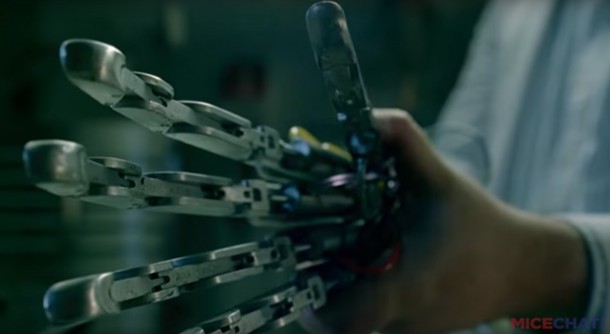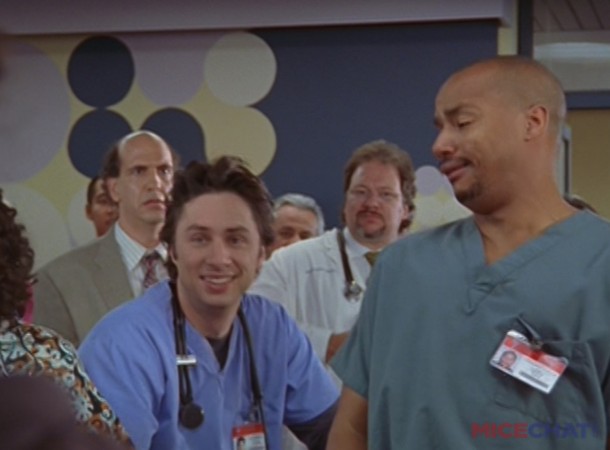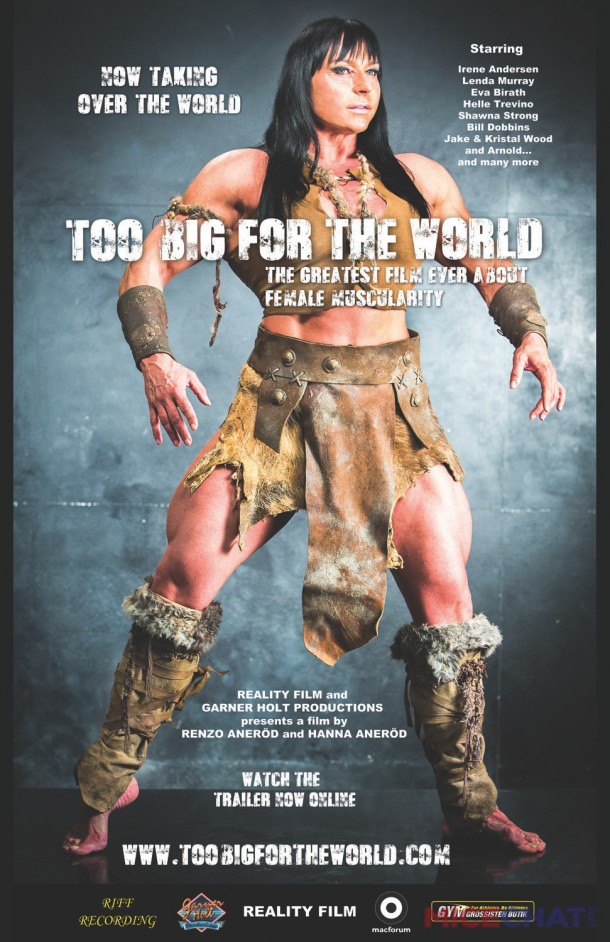Howdy everyone—greetings after a much-too-long hiatus from this column! It’s been many months — I confess, over a year! — since I’ve written, during which time my company has been busier than ever before, with attraction openings from the Netherlands to Shanghai, Plymouth, Massachusetts to Seattle, Washington and plenty in between (even “sallying” through the Haunted Mansion at Disneyland). In the glow of being too busy to slow down for a second, I hope you’ll forgive a tardy article!
One question that I am asked on just about every tour of my shop and in nearly every talk I give to schools and fan groups is whether Garner Holt Productions, Inc. (GHP) ever does work for movies. It’s a good question, since animatronics have long played a significant role in movies of all types, from the troublesome Jaws’ “Bruce” figure to the incredible dinosaurs in Jurassic Park, and in hundreds of earlier and subsequent films. However, while GHP is at the top of the theme park animatronic marketplace, our work in films and TV is rather limited.
There are a number of reasons for that: first, theme park and film animatronics are designed and constructed in very different, even opposite ways. For theme parks, our work must stand the rigors of use for up to 16 hours a day, every day of the year, often with a planned twenty year service life. That means that the engineering that goes into theme park figures must be exceptionally thorough, and the parts selected for production need to be exceptionally robust, often of “aircraft quality.” It’s interesting to note that the very first animatronic figures created by Disney in the early 1960s were made possible by the use of aerospace comp onentry, particularly linear actuators. Movie animatronics, on the other hand, really only need to work for as long as it takes to get their shot on film. Once a movie figure has been filmed, they are often trashed, or their components recycled into other animatronics (sometimes that happens in theme parks, too, but contrary to popular belief, Oogie Boogie is not Big Al!). That means their actuators are more hobby than professional grade, silicone skins more delicate and prone to rip, and frames less sturdy.
Another reason GHP doesn’t do much film work is the lead times given to animatronics builders in that field. In theme parks, designers carefully consider all aspects of a project before production begins, including animatronics. Some attractions gestate for years before they begin to be built, and an adequate amount of time is generally also given to fabricate animatronics and other physical elements for rides and shows. In film and TV, the lead times are often much shorter. GHP gets numerous emails every week from production companies asking if we can provide animatronics for shoots, often with weeks or days until filming. The short time frame given for us to actually complete work, coupled with the less-robust building style of their animatronics, means that GHP does very little for the big and small screen…but we have dabbled.
GHP’s animatronics have been filmed in their permanent locations for many TV commercials, from regional to major theme parks. We’ve also created custom performances for advertising, like when I programmed a special show for our animatronic Jack Skellington’s appearance in a TV commercial during the first iteration of Disneyland’s Haunted Mansion Holiday attraction overlay, in 2001. A couple of years ago, we were approached by the producers of ABC’s Whodunnit?, asking if we had a mountain lion figure available for rent. As it happened, we were building an animatronic mountain lion for Knott’s Berry Farm’s Timber Mountain Log Ride at the same time—so our figure appears as the main suspect in a mauling case on the short-lived series.
On the big screen, GHP contributed some foam sculpture for Guillermo del Toro’s Hellboy, stray pieces that ultimately became more detailed props for the film, as well as Ron Perlman’s full-scale body cast that was used for the detailed hero costume. Then we made the “after” version of a witch burned at the stake for Underworld: Rise of the Lycans, work by my creative production director, James Brown, a veteran of horror films and highly-themed haunted attractions. Although I started out creating haunted houses, I’m not really one for gory horror. I’ve even walked away from working on some attractions because of their too-gruesome style. Interestingly, these days it’s horror films that tend to stick to using dimensional figures and props for production, in a cinematic environment increasingly reliant on computer-generated characters and environments.
Recently, I had the opportunity to be part of a truly exciting moviemaking experience for the small screen. Perhaps the most overt animatronics-related movie ever has no real animatronics in it at all: 1973’s Westworld is a sci-fi thriller featuring an incredibly immersive theme park-like experience populated by highly realistic animatronic figures—all ably portrayed by real, live people. The film was an inspiration to me, and remains one of my favorites, even if I’m now sophisticated enough to recognize that, hey! those aren’t animatronics at all! Several years ago, we were contacted by a set designer for Disney’s Tomorrowland film, asking if GHP might provide some animatronic elements for the film. Ultimately, we didn’t end up doing anything for the movie, but the designer called us back when production ramped up on an all-new version of Westworld, to premiere next month on HBO.
Being asked to be part of something as iconic for “animatronics” as Westworld was a once-in-a-lifetime opportunity. Veteran film set decorator Scott Jones (Apollo 13, A.I., The Dark Knight Rises, among many others) came to GHP to take a look at things we had around the shop that might be good elements for a detailed lab set for the new series. He selected a number of animatronic figures that we use for demonstration purposes and trade shows (a couple of humans, a mule deer, a sparrow, and others), plus some mechanical bits and pieces that would look cool in a set designed to portray a lab where animatronics are built and repaired. When it came time to give a price for renting our equipment, I told Scott we had two prices: a higher one for just the figures, and a lower one for the figures…and a walk-on role on the episode of the show where our items appear for me and my creative director, Bill Butler. We were thrilled that HBO decided to go with the lower price!
After carting our things out to the set in Simi Valley, where we arranged them, and even programmed some of the humans and animals to move, Bill and I were outfitted with official Westworld lab coats and given roles as background technicians in the set. (One of our crew who helped load in and set up our figures is Lloyd Ball, our lead controls technician, who served for many years as the head of the hydraulic shop at the legendary Stan Winston Studios. Lloyd worked on dozens of incredible films over the years, and it’s him controlling the amazing animatronic dinosaurs in the original Jurassic Park—he’s a natural on set!) Bill and I had a blast spending the day appearing in various shots and going through the same motions over and over to achieve the director’s vision. It was Bill’s first time on screen, but I’m a veteran: I once played a doctor in an episode of Scrubs!
The highlight of our day was when a special guest arrived on the set: one of the stars of the series, Sir Anthony Hopkins. He was impressed with our animatronics on set, and generously spent some time chatting with us about our work and the scene. Meeting a legend like Tony (as he asked to be called) was incredible, a once-in-a-lifetime experience I’m grateful for and will never forget! Being part of a show like Westworld is something I would never have dreamed of as a kid watching the original, and I can’t wait to see how the new series plays out. You can see our animatronics in the trailer, particularly the animated hand near the end. It’s almost surreal to be a small part of show like that, sort of like coming full-circle.
In closing, I want to share another film project that I’ve been hard at work on for some time. It may surprise some readers (okay, most readers!) to know that I have been a longtime supporter of the somewhat little-known sport of female bodybuilding. It all started when I was in my twenties (and, believe it or not, a major adherent to bodybuilding myself) and got acquainted with some competitors in the field of female muscularity. Through the years, I followed the sport and became friends with numerous competitors, doing what I could to encourage and support the sport as it gained a larger international presence.
A couple years ago, I met Irene Andersen, a Swedish bodybuilding champion who was a vocal advocate for the sport and outspoken leader in the fight to maintain female bodybuilding’s legitimacy and presence on the world stage. Increasingly, the sport has been marginalized and its participants discriminated against by the bodybuilding world at large and some professional organizations in particular. Irene was in the beginning stages of working with a husband and wife Swedish documentary filmmaking team to create a film that spotlights the sport and the challenges faced by its incredibly dedicated and disciplined competitors, many of whom must tackle obstacles like sexism, cultural prejudice, and professional indifference to be part of the sport they dedicate their all to. I lent my support to the film project as a co-producer, and now, two years later, Too Big for the World is set to premiere tomorrow at the Ahrya Fine Arts theater in Beverly Hills, California. I’d like to invite the readers of This Animatronic Life to be there—you can buy tickets online at https://www.laemmle.com/films/41013, for show times at 7:20pm and 9:55pm. I hope you can make it out to support this incredible documentary and to be part of giving a greater voice and empowering the women who are part of this unique sport. Find out more about the film at www.toobigfortheworld.com







You must be logged in to post a comment.